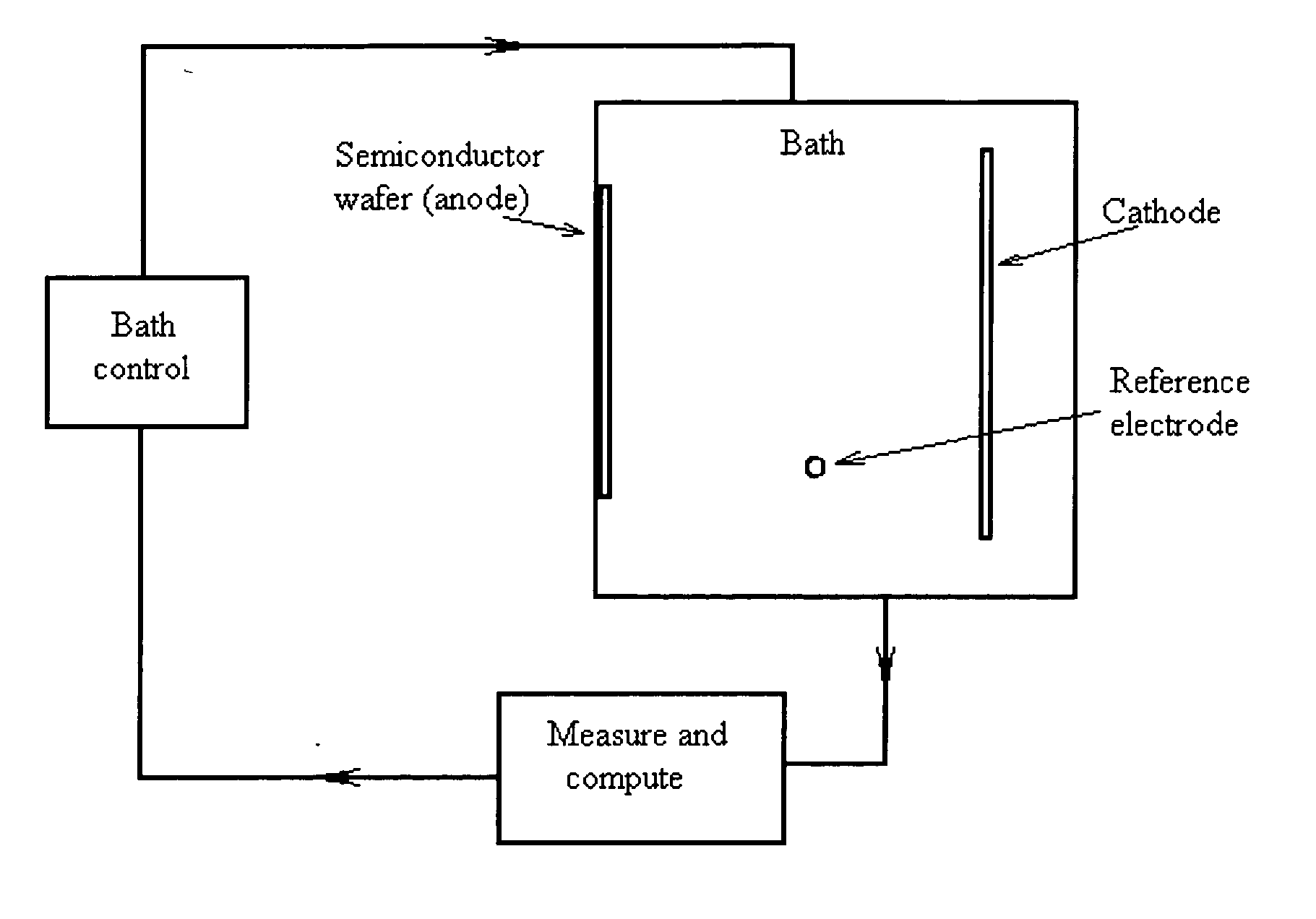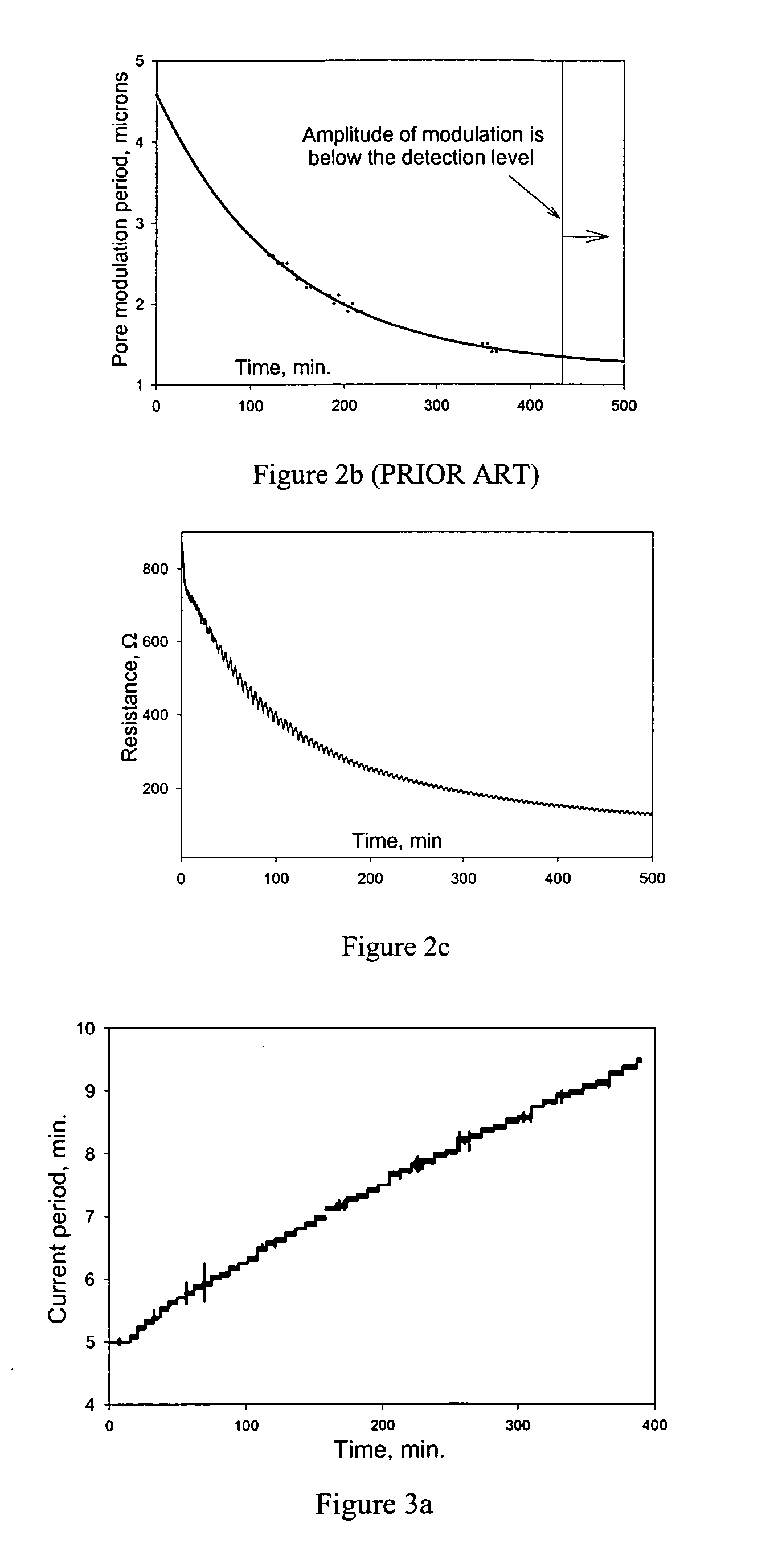Semiconductor electrochemical etching processes employing closed loop control
a technology of electrochemical etching and semiconductor wafers, applied in semiconductor/solid-state device testing/measurement, manufacturing tools, electric circuits, etc., can solve the problems of limiting the maximum obtainable thickness of the useful mpsi layer, natural modification of electrochemical etching parameters, and not entirely satisfactory current art methods of electrochemical etching of semiconductors for at least some applications. good quality
- Summary
- Abstract
- Description
- Claims
- Application Information
AI Technical Summary
Benefits of technology
Problems solved by technology
Method used
Image
Examples
Embodiment Construction
[0039] According to the first exemplary illustrative non-limiting implementation, the closed-loop control over the semiconductor electrochemical etching process can be realized by [0040] measuring the present value of the resistivity (or conductivity) of the semiconductor wafer / electrolyte / electrode electrochemical system [0041] adjusting the electrochemical etching parameters automatically and continuously or quasi-continuously, according to the detected changes in said value of the resistivity (or conductivity) of said electrochemical system occurring during the electrochemical etching process.
[0042] Said electrochemical etching parameters that could be adjusted, in the case of a porous multilayer of varying porosities being formed in said semiconductor wafer, include, but are not limited to, the applied current density, time constant of current modulation, amplitude of said current modulation, and temperature of said electrolyte. The schematic block-diagram of the closed-loop co...
PUM
| Property | Measurement | Unit |
|---|---|---|
| Frequency | aaaaa | aaaaa |
| Frequency | aaaaa | aaaaa |
| Carrier concentration | aaaaa | aaaaa |
Abstract
Description
Claims
Application Information
 Login to View More
Login to View More - R&D
- Intellectual Property
- Life Sciences
- Materials
- Tech Scout
- Unparalleled Data Quality
- Higher Quality Content
- 60% Fewer Hallucinations
Browse by: Latest US Patents, China's latest patents, Technical Efficacy Thesaurus, Application Domain, Technology Topic, Popular Technical Reports.
© 2025 PatSnap. All rights reserved.Legal|Privacy policy|Modern Slavery Act Transparency Statement|Sitemap|About US| Contact US: help@patsnap.com



